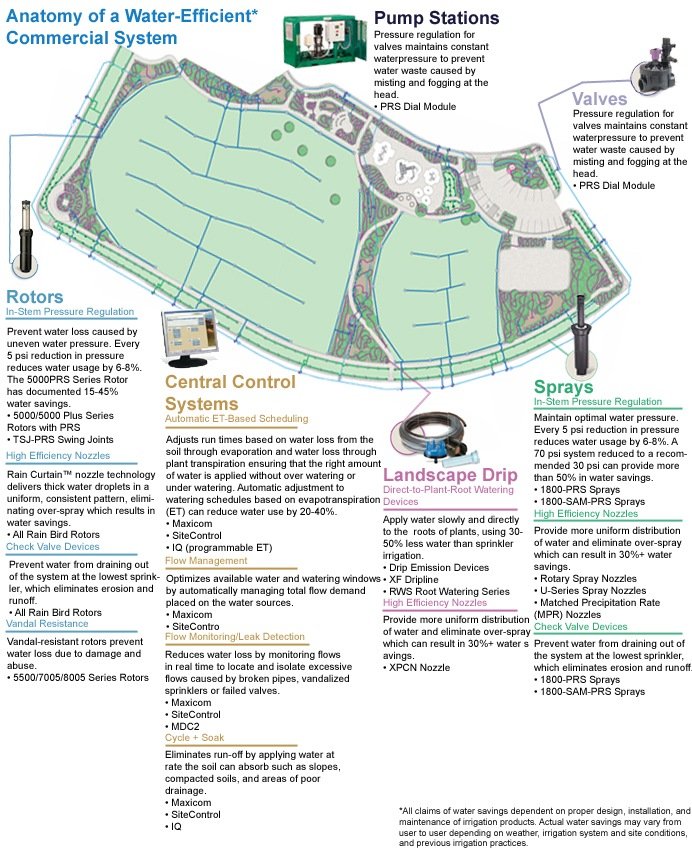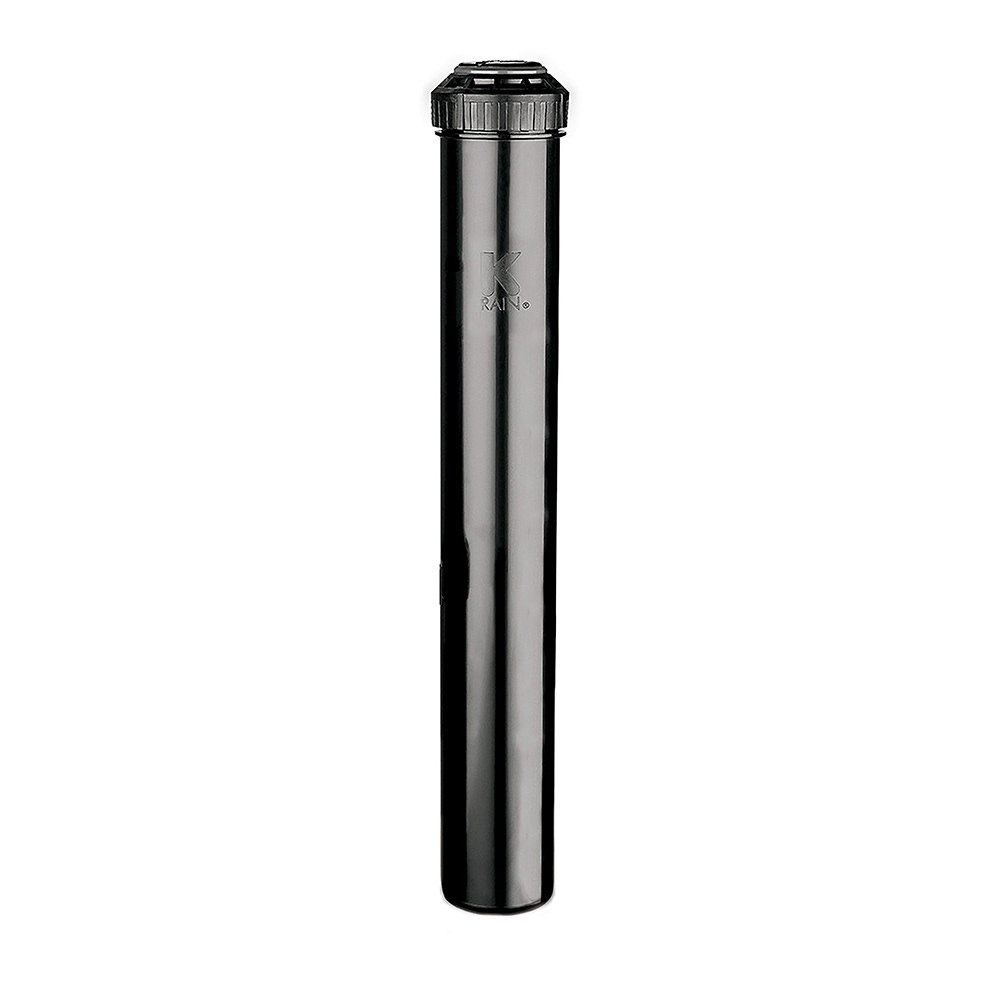Design Guide For Water-Efficient Sprinkler Systems
This water-efficient commercial system design guide highlights Rain Bird product and technology solutions for a healthy landscape that uses less water. Some of the benefits of this irrigation system include lower bills, shorter run times, less fertilizer and pesticides. It also creates healthier plant material, there are less disease and plant loss as well as less water waste. It even makes the site easier to maintain.

Anatomy of Water-Efficient Commercial System:
Rotors
- In-Stem Pressure Regulation– This prevents water loss caused by uneven water pressure. For instance, every 5 psi reduction in pressure reduces water usage by 6-8%. The 5000PRS Series Rotor has documented 15-45% water savings. (5000/5000 Plus Series Rotors with PRS. TSJ-PRS swing joints)
- High Efficiency Nozzles– The Rain Curtain nozzle delivers thick water droplets in a uniform, consistent pattern. In other words, this eliminates over-spray which results in water savings. All Rain Bird rotors have this feature.
- Check Valve Devices– These devices prevent water from draining out of the system at the lowest sprinkler. By doing this it eliminates erosion and runoff. All Rain Bird rotors have this feature.
- Vandal Resistance– Vandal-resistant rotors prevent water loss due to damage and abuse. 5500/7005/8005 Series Rotors
- Click here to browse and purchase Rain Bird rotors from the Sprinkler Warehouse
Central Control Systems
- Automatic ET- Based Scheduling- This scheduling adjusts run times based on water loss from the soil through evaporation. It also adjusts for water loss through plant transpiration ensuring that the right amount of water is applied without over watering or under watering. Automatic adjustment to water schedules is based on evapotranspiration (ET) can reduce water use by 20%. Maxicom. SiteControl. IQ (programmable ET)
- Flow Management– Optimizes available water and watering windows by automatically managing total flow demand placed on the water sources. Maxicom. SiteControl.
- Flow Monitoring/ Leak Detection– This reduces water loss by monitoring flows in real time to locate and isolate excessive flows. These flows are caused by broken pipes, vandalized sprinklers or failed valves. Maxicom. SiteControl. MDC2
- Cycle + Soak– Eliminates run-off by applying water at rate the soil can absorb. For instance, slopes, compacted soils, and areas of poor drainage. Maxicom. SiteControl. IQ
Landscape Drip
- Direct-plant-root-watering devices-apply water slowly and directly to the roots of plants, using 30-50% less water than sprinkler irrigation. (Drip Emission Devices. XF drip line. RWS Root watering series)
- High Efficiency Nozzles-provide more uniform distribution of water and elimate over-spray which can also result in 30%+ water savings. XPXN Nozzle.
Sprays
- In-Stem Pressure Regulation– Above all, these sprays maintain optimal water pressure. Every 5 psi reduction in pressure reduces water usage by 6-8%. A 70 psi system reduced to a recommended 30 psi can provide more than 50% in water savings. 1800-PRS Sprays. 1800-SAM-PRS Sprays
- High Efficiency Nozzles– provide more uniform distributed of water and eliminate over-spray which can result in 30%+ water savings.
- Check Valve Devices– prevent water from draining out of the system at the lowest sprinkler, therefore eliminating erosion and runoff. 1800-PRS Sprays. 1800-SAM-PRS Sprays
Pump Stations: Commercial System
Pressure regulation for valves maintains constant water pressure. It does this to prevent water waste that is caused by misting and fogging at the head (PRS Dial Module)
Valves: Commercial System
Pressure regulation for valves maintains constant water pressure. In short it does this to prevent water waste caused by misting and fogging at the head (PRS Dial Module)
Click here to shop for Rain Bird products.
However, all claims of water savings dependent on proper design, installation and maintenance of irrigation products. Actual water savings may vary from user to user depending on various factors. These include weather, irrigation system and site conditions, and previous irrigation practices.





























